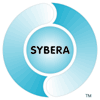EtherCAT Realtime Master
Ethercat Master LibraryThe EtherCAT realtime library system of SYBERA enables a custom ethernet adapter under Windows (2000, XP, Vista, 7) as an EtherCAT Master. Therefor the base is the Sybera X-Realtime technology. The library system allows the deterministic control of EtherCAT slave participants (e.g., the EtherCAT modules from Beckhoff Automation GmbH). Depending on the PC hardware telegram update cycles upto 50 microseconds are realistic. As physical link customary INTEL or REALTEK chips are suitable.
EtherCAT Master Functionality
Beside numerous extended EtherCAT functions for Distributed Clock, COE and State management, the library system also allows to control EtherCAT devices, even without a corresponding XML file. With the integrated station management the devices may be completely administered and controlled almost implicitly, or every single functional step (FMMU, SYNCMAN, PDO, STATE...) may be controlled separately. In addition, SYBERA has developed the comprehensive test software ECATVERIFY which allows the developer to test Ethercat devices without programming and to parametrize the devices. Thereby the developer is led through the startup procedure interactively by single functional groups and states. Besides, all information are visualised in detail.
EtherCAT Master TechnologyOn this occasion, not only the sending and receiving of ethernet frames under realtime condition due to the specification of the EtherCAT Technology Group (ETG) is realised. The interface allows the functional control of EtherCAT telegrams in a separate realtime task. The system is based on 4 realtime tasks, for sending and receiving of ethernet frames, and functional control. With an integrated state machine the tasks are functionally synchronised. A realtime error task recognises any frame failure and hardware latency. It is checked if an answer was received to a sent telegram (integrated timeout condition), if the working counter of the answer telegram is 0 and if the index fields of the sending telegram match the and receiving telegram. In addition, an emergency telegram is deposited, being sent by the error task in case of an error condition. A frame filter will separate the EtherCAT telegrams within the ethernet frame and transfer them to the telegram stack.
EtherCAT Master LifeSYBERA offers the unique opportunity to experience the field bus system directly in the realtime simulator in Holzgerlingen. The simulator unites digital and analogous Sensorik and Aktorik in a complicated pneumatics machine. A passenger's cell can be controlled with lift movements, rolling movements, pitching movements and rotary movements. To the EtherCAT modules connected devices enclose laser distance sensors, inductive sensors, pressure sensors, incremental sensors, and valves, reflecting therefore the known sphere of the control technology. The passenger has the possibility to change the parameters and to influence therefore the latency and jitter of the controlling system. The realtime simulator helps all prospective customers to be able to estimate the field bus system for the industrial use.
Dynamic Jitter Compensation for EtherCAT Master
For the first time the process of dynamic jitter compensation with active and passive feedback integrated within the EtherCAT master library is used for controlling EtherCAT drives.
Although the X-Realtime Engine processes with a maximum jitter beyond 15 microseconds, an additive jitter results from the systematic EtherCAT sampling operation, which has to be reduced for controlling and synchronizing drive controllers.
Thus, the additive jitter of the X-Realtime Engine on 20 sampling periods is approximately 200 microseconds with a dynamic drift of about 10 microseconds per cycle.
With compensation, however, this jitter is only about 15 microseconds with a dynamic drift in the nanosecond range.Thus the integrated distributed clock management of the master library compensates the time-offset, the static and dynamic drift, as well as the propagation delay.
Therefore the physical connection of the drive is done via the Ethernet port of a standard PC.

Ulteriori informazioni

